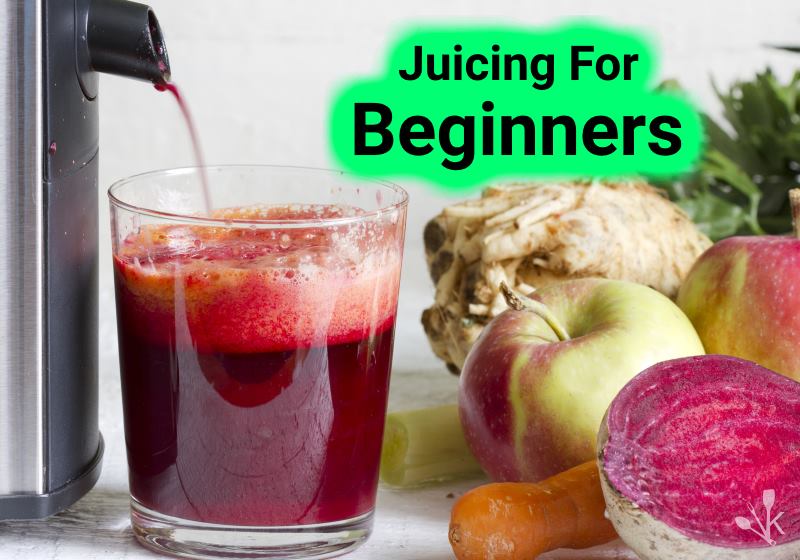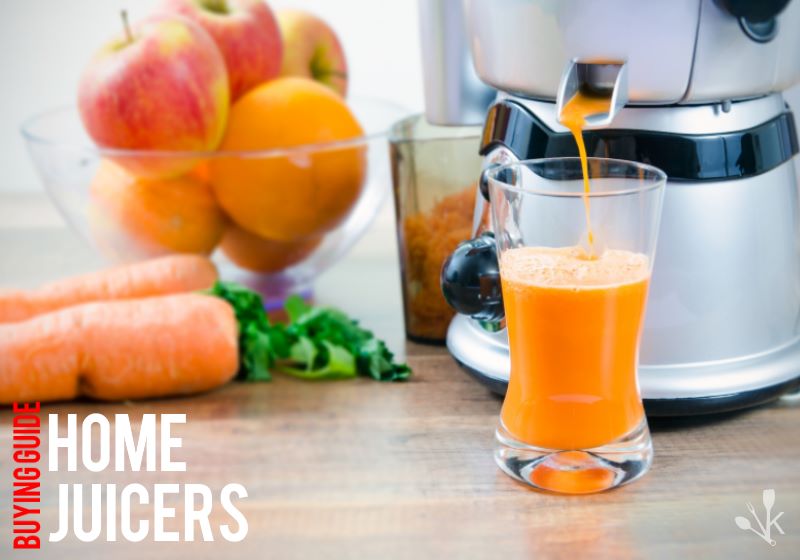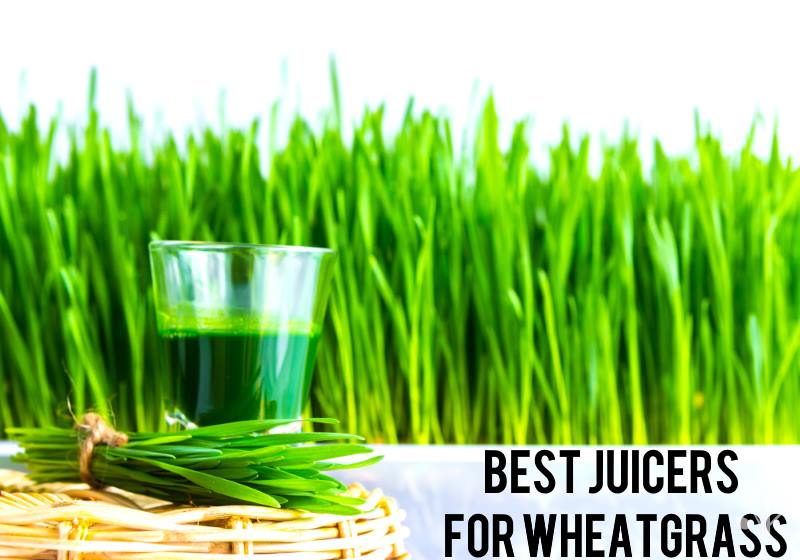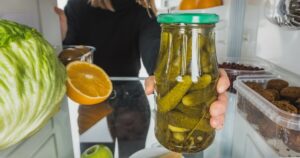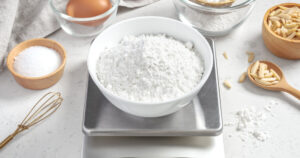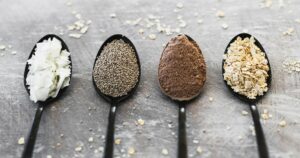When it comes to juicing apples, are all varieties of apples created equal?
As someone who juices at home, you have a lot of freedom in your choice of apples to create a balanced juice. Don’t feel like you need to stick to the same few you grew up eating for school lunches.
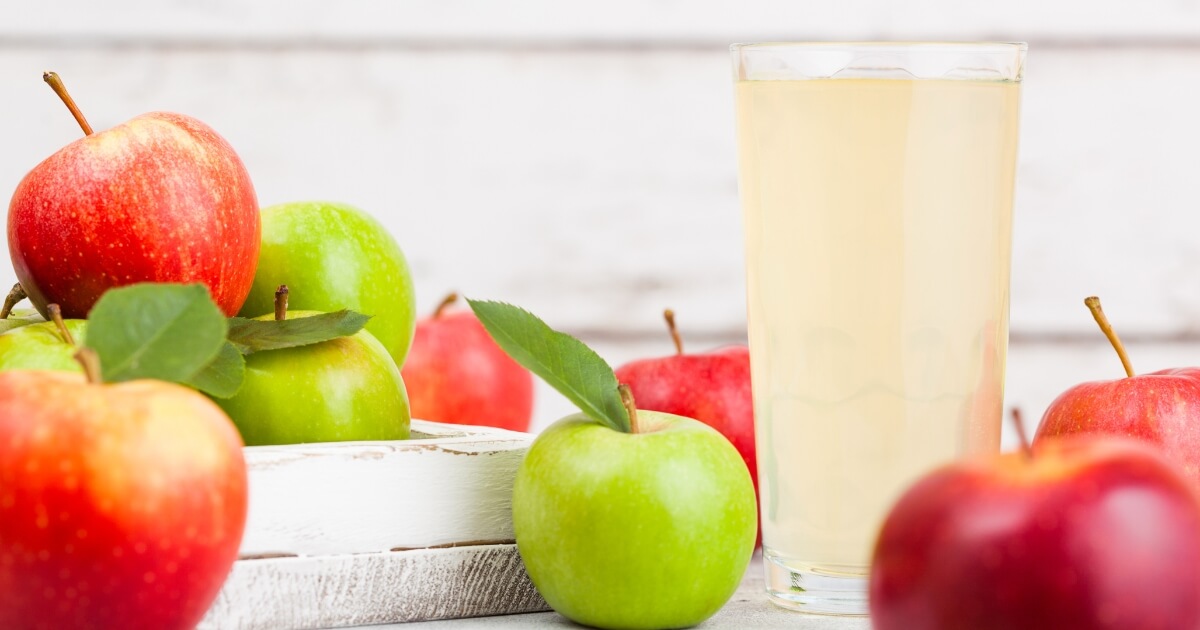
I’ve got some recommendations for you! So, let’s look at the best apples for juicing and why you might want to choose them over the others.
1. Red Delicious
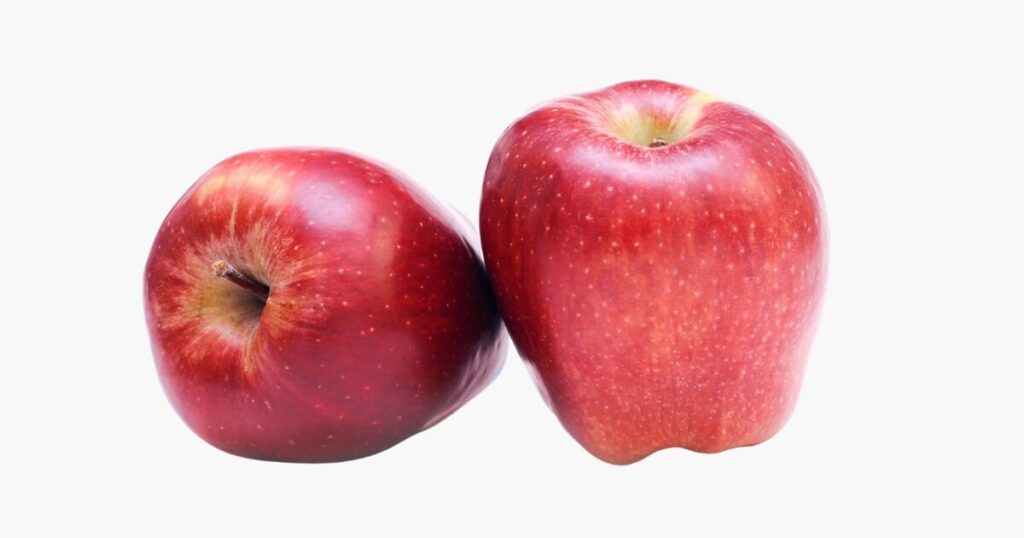
The Red Delicious apple, with its deep red hue and slightly elongated shape, is a favorite among many home juicers, particularly in the U.S. At its core (pun intended!), the essence of an apple is a balance between sweetness and tartness.
However, some sweet apples, like the Red Delicious, naturally pack more sugar, tipping the scales towards a sweeter profile. This natural sweet taste is why many find it to be one of the top choices for fresh apple juice.
The closer it is to its peak ripeness, the juicier and more flavorful it becomes. So, it’s a good idea to get familiar with spotting a perfectly ripe apple in the bunch.
Look for a deep, rich color and a slight give when you gently squeeze it. But don’t squeeze too many because the bruise can accelerate the apple going bad.
2. Fuji Apples
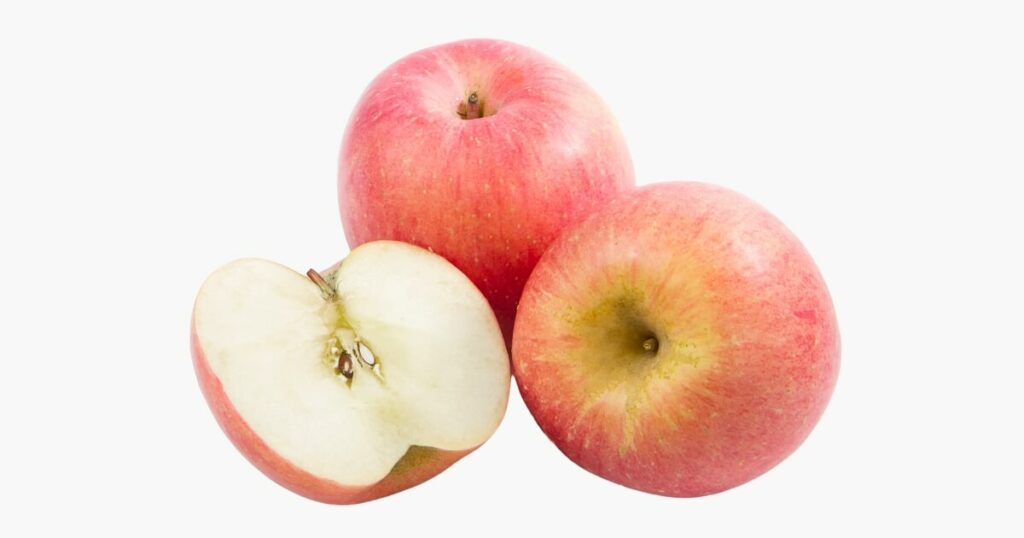
Originating from Japan, Fuji apples have quickly become a favorite in many households, especially in the U.S. These apples are a cross between two American variety of apples, the Red Delicious and Ralls Janet.
Recognizable by their lovely pink flush over a yellow-green background, they’re known for their crisp texture and sugary sweetness.
And while they’re sweet, they have a subtle tartness that gives the juice a balanced flavor, making it refreshing and not overly sweet.
When it comes to juicing, Fuji apples are a top contender. Their natural sweetness means you often don’t need to add any extra sugar to your fresh juice. Plus, they yield a good amount of juice, making them cost-effective for regular juicers.
But what sets Fuji apples apart is their longer shelf life. They retain their firmness and flavor for weeks, which is great if you like to buy in bulk.
In terms of nutritional benefits, Fuji apples pack a punch. They’re rich in dietary fiber and vitamin C. And just like with the Red Delicious, if you decide to juice with the skin on, you’ll get an added boost of nutrients.
Fuji apples that are slightly softer to the touch tend to be sweeter, making them perfect for juicing.
3. Gala Apples
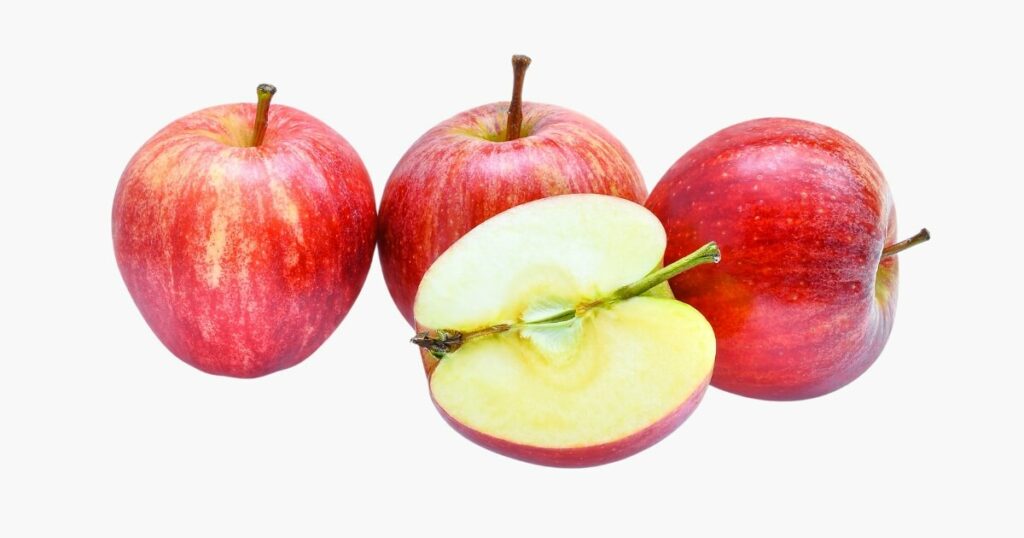
These apples hail from the land of New Zealand but have become a massive hit in the united states, ranking at number two for popularity behind the good old Red Delicious.
Gala apples that you would purchase from the supermarket are a bit hit or miss. About half the time, they will be floury or less sweet than they should be.
Where the Gala apple shines is on homegrown trees.
A homegrown gala apple will be much sweeter and juicier than its brethren from the supermarket.
No one has ever been able to provide me with an answer to why this is the case.
Maybe Gala apples don’t travel as well as other apples, or perhaps it has to do with the pesticides used by commercial orchards, but homegrown Gala apples are the way to go for juicing or just snacking on.
If you think you might stick with home juicing for a long time, you might consider growing a Gala apple tree in your yard.
4. Yellow Delicious
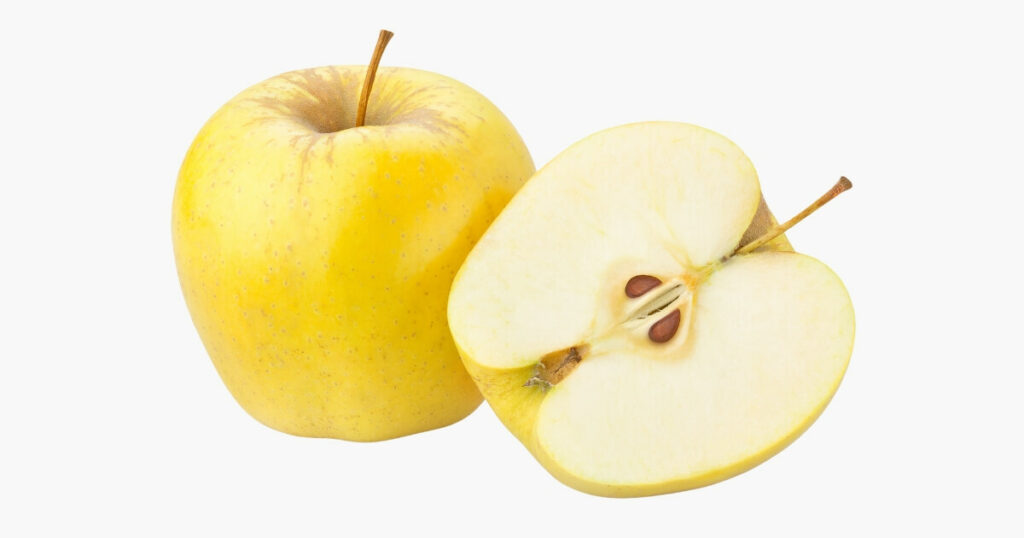
The Yellow Delicious is often referred to as the Golden Delicious. It’s a classic favorite that you can find almost anywhere.
Contrary to what some might think, the Yellow Delicious isn’t directly related to the Red Delicious. However, it does have a connection to the Gala apple, as it’s one of the parent apples of the Gala variety.
The Yellow Delicious apple stands out with its smooth, golden skin and sweet flavor.
While it might not be as sweet as the Red Delicious or Gala apples, it’s a very good choice if you have them on hand.
The sweetness is balanced, not overpowering, and it offers a slightly tart flavor.
The Yellow Delicious is a solid choice if you’re aiming for a balanced juice that’s not overly sweet but still has that authentic apple flavor.
Including its skins in the juicing process can introduce a hint of tartness, giving the juice a more rounded flavor profile.
5. Granny Smith Apple
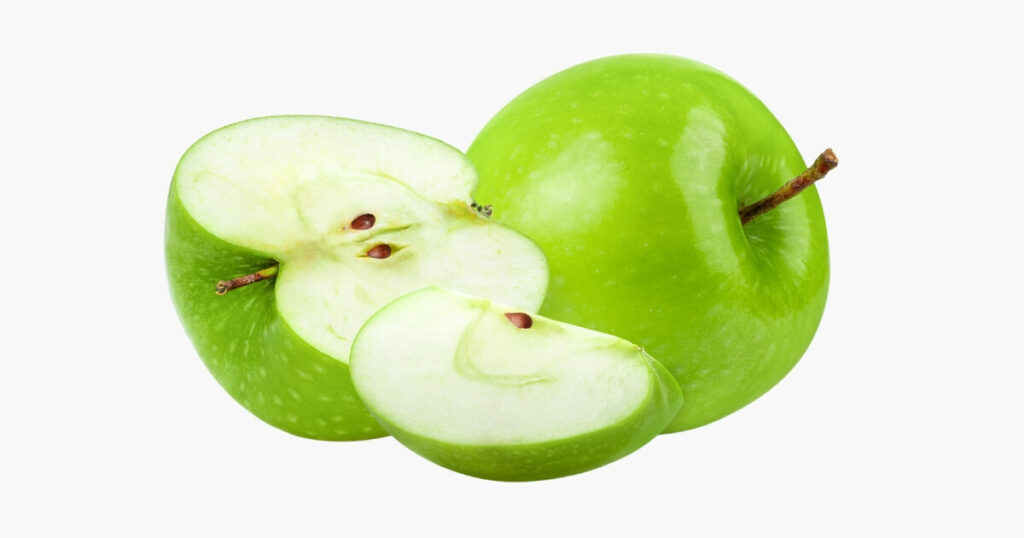
What about green apples? Granny Smith are tart apples and are unmistakable with its vibrant green skin.
Granny Smith is the apple for you if you’re not a fan of overly sweet juices.
When you take a bite of a Granny Smith, you’re immediately met with its tartness. This sharp, zingy flavor makes it a favorite for those who prefer their apple juice with a bit of a kick.
But it’s not just about the flavor. Granny Smith apples are packed with goodness. They’re notably high in potassium, and their antioxidant levels can hold their own against many other apple varieties.
So, if you’re looking for a health boost with your juice, this apple has got you covered.
6. Honey Crisp
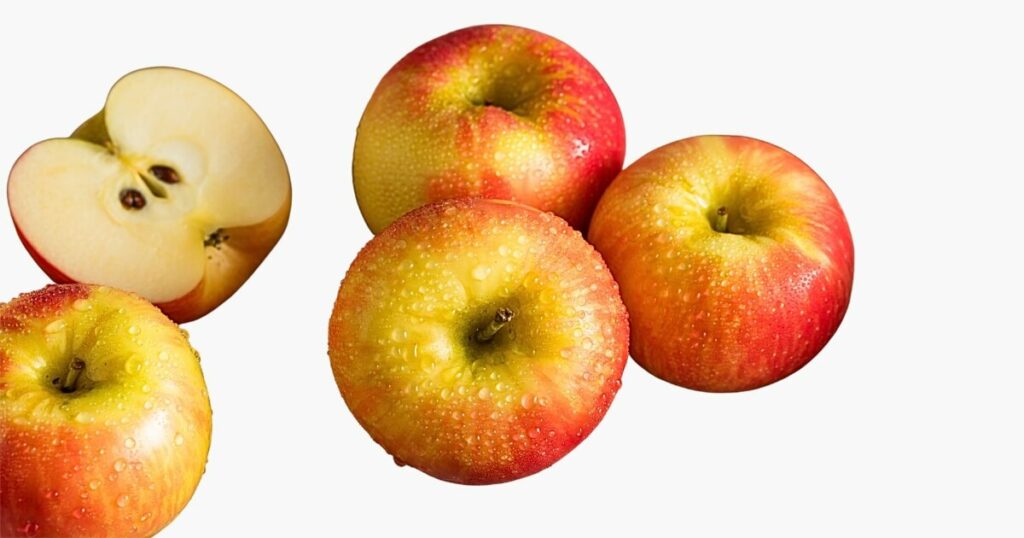
When you bite into a Honey Crisp, you’re met with a burst of juice, making it a top contender for juicing.
Its natural sugar content is balanced with a hint of tartness, producing a refreshing and sweet juice without being overpowering.
The Honey Crisp apple is a relatively new kid on the block, having been developed in the 1960s, but oh, what an impression it’s made!
Especially popular in the U.S., its name gives away its best qualities:
- A delightful sweetness paired with a satisfying crunch.
- Vibrant red and pale green skin.
Honey Crisp apples tend to be at their juiciest and most flavorful when they’re firm to the touch. So when you’re out shopping, pick those that feel solid in your hand, and you’re in for a treat!
7. Ashmead’s Kernel
Ashmead’s Kernel is a classic from England, boasting a history that dates back to the 1700s. With age comes character, and this apple is no exception.
Its flavor profile is unmistakably an apple, but it carries a hint of pear-like sweetness that sets it apart from the rest.
The Ashmead’s Kernel was used as a dessert apple for most of its past. But lately, it’s been making waves in the juicing world.
When turned into juice, Ashmead’s Kernel offers a distinct flavor yet doesn’t skimp on the nutritional goodness you’d want from your apple juice.
While its taste might raise a few eyebrows, it’s definitely one of those flavors you’ve got to experience at least once.
Should You Leave The Skin On Or Not?
This leads to an interesting debate for many juicers, as most of the apple’s nutritional value is contained in its skin.
To get the highest amount of nutrition from your apples, leaving the skin on for the juicing process makes sense. Sorry, but no matter what, you’ll want to skip the bitter apple seeds.
Including the skin in your juice produces a cloudy juice, which is darker in color and tastes a little different from what you may be used to.
On the flip side of the apple skin debate, there’s the issue of pesticides. Unless organic, many apples are treated with pesticides that can linger on the skin.
While washing can remove some residues, it might not eliminate everything.
There’s been chatter about lead and arsenic concerning fruits, but it’s essential to note that these concerns are often tied to the soil and water where the apples are grown rather than the pesticides on the skin.
If you’re worried about potential contaminants, going for organic apples or thoroughly washing and scrubbing your favorite apples before juicing can be a safer bet.

